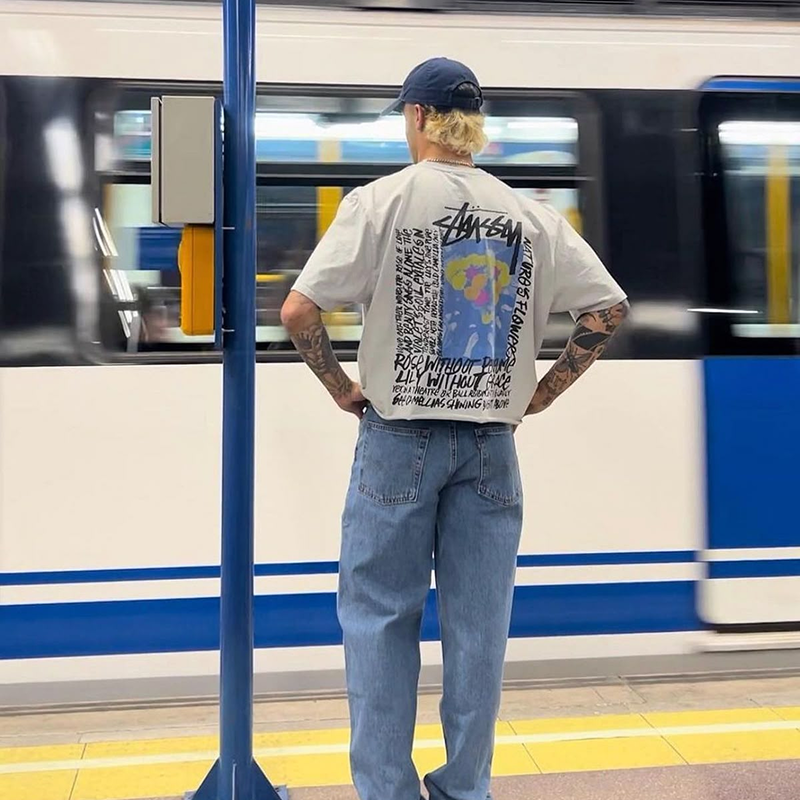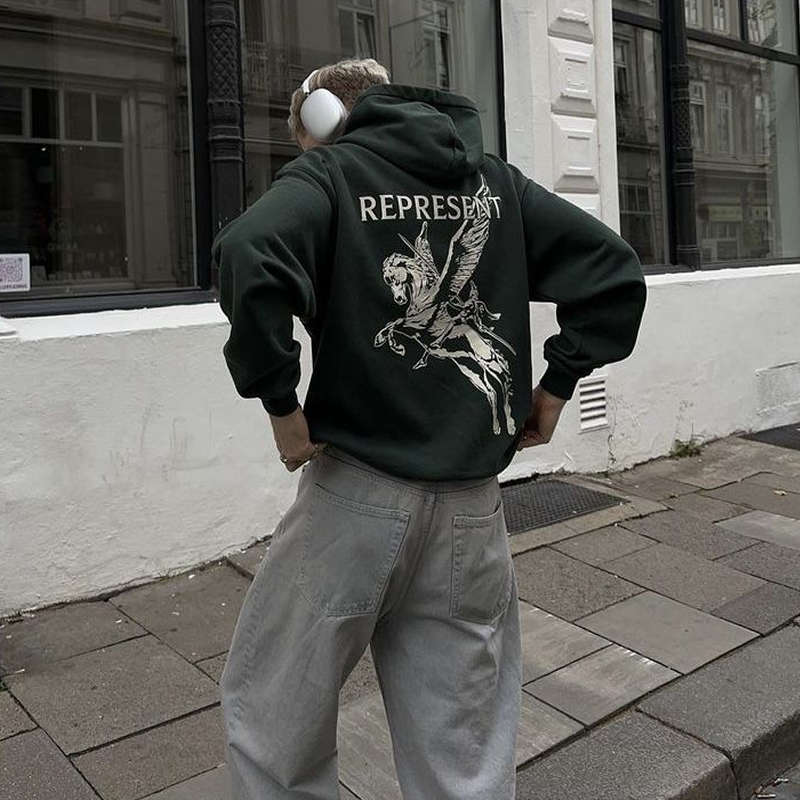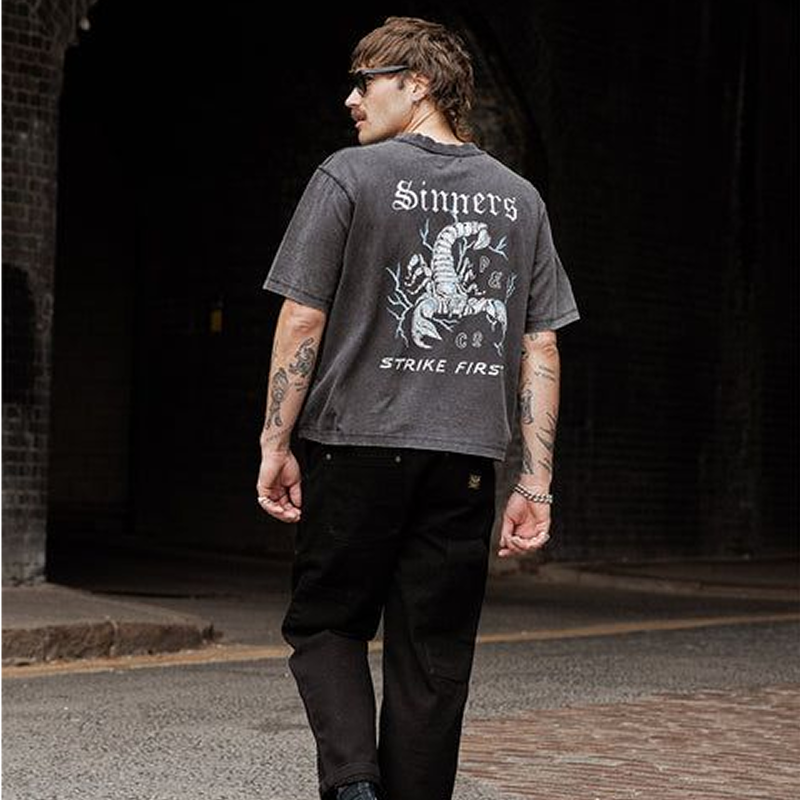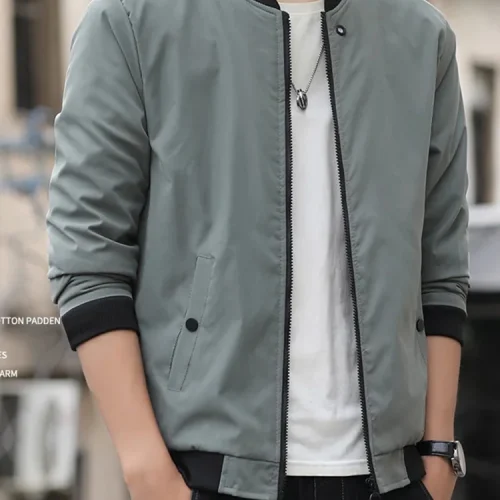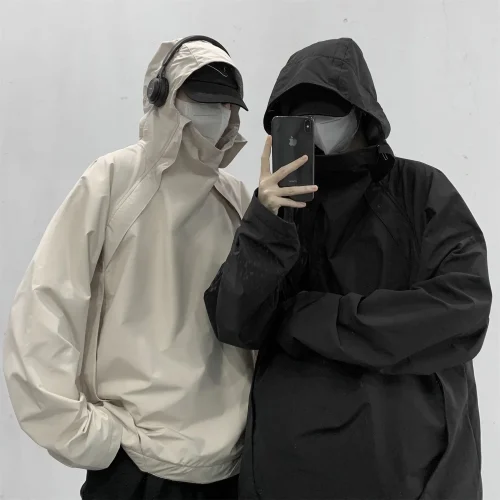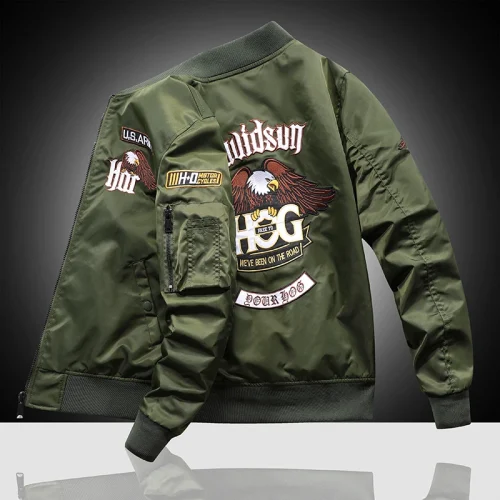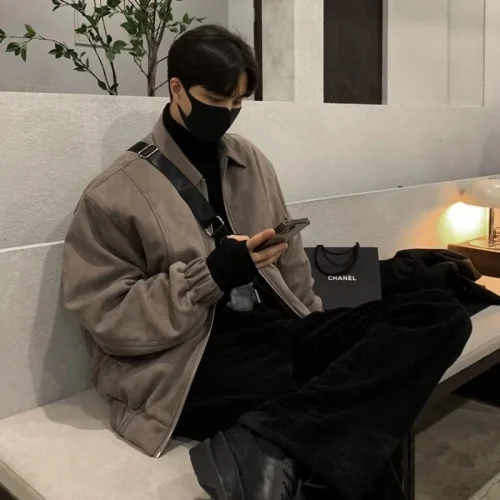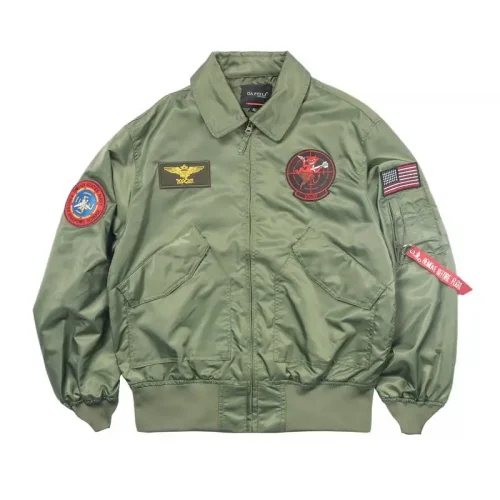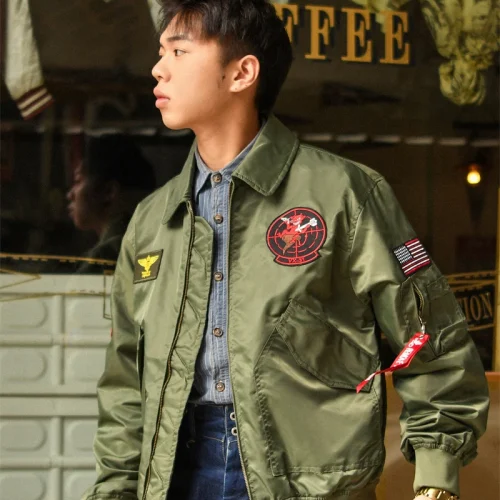1. The Subtle Revolution in Everyday Style
There was a time when fashion screamed. Loud logos, complex cuts, sharp silhouettes — the louder, the better. But as the world moved through chaos, digital overload, and constant exposure, style took a quieter turn. And leading that transformation? The T-shirt and the hoodie — two of the simplest, most democratic pieces in the modern wardrobe.
They became more than comfort wear. They became language. A plain white tee could speak volumes — about taste, restraint, or rebellion. A washed, oversized hoodie could whisper confidence without needing validation. In a world obsessed with attention, the most stylish people began mastering the art of understatement.
Today, minimal streetwear — grounded in premium cotton tees, oversized hoodies, and clean silhouettes — defines a generation that doesn’t chase trends; it builds identity. This isn’t fashion that tries too hard. It’s the kind that makes people look twice without knowing why.
2. The Power of Simplicity
What gives a simple T-shirt so much weight? It’s the paradox of minimalism. The fewer the elements, the sharper the focus. A well-cut tee frames the body naturally. It moves with you — not against you. Its neutrality lets your personality take the stage. You become the message.
That’s why modern brands have shifted from decorative design to fabric innovation and fit precision. Weighty cotton with a soft hand-feel, slightly boxy cuts, dropped shoulders — all subtle decisions that shape visual presence. A T-shirt now carries the same attention once reserved for tailored shirts.
Meanwhile, hoodies evolved into comfort armor. A blend of softness and structure, they balance warmth with edge. Pairing a hoodie under a blazer or a leather jacket became the new form of rebellion — not against authority, but against discomfort and pretense.
In 2025, the new cool is not about standing out. It’s about being comfortable in silence.
3. Neutral Tones, Bold Intentions
Fashion colors used to rotate wildly — neons, pastels, metallics — until the modern palette returned to neutrality. Earth tones, greys, beiges, washed blacks, and soft whites dominate wardrobes not because they’re safe, but because they’re versatile.
When you wear a beige tee or a stone hoodie, you’re not disappearing; you’re building a foundation. These tones allow endless layering, mixing, and texture play. They adapt to moods — casual in daylight, intimate at night. It’s the aesthetic of quiet luxury meeting urban minimalism.
This muted color story also signals maturity in streetwear. The youth-driven chaos of the early 2010s gave way to timelessness. People realized that true cool doesn’t age. The tee you bought today could be your favorite five years later — because it wasn’t chasing a moment, it was building a style language.
4. The Art of Fit and Layering
If there’s one word that separates average from exceptional in fashion, it’s fit.
Modern T-shirts and hoodies play with proportion, but never by accident. Oversized doesn’t mean sloppy; it’s engineered freedom. A boxy tee balances wide pants. A cropped hoodie pairs perfectly with high-waisted cargos. Slim tees slide easily under denim jackets. Every inch counts.
Layering, once a practical necessity, has become an expression of individuality. Picture this:
- A crisp white tee under a washed black hoodie.
- A charcoal hoodie beneath a camel coat.
- A longline tee with a cropped bomber.
Each combination adds a story — about proportion, contrast, and comfort. Layering with intention creates dimension. It tells the world that you’ve mastered effortlessness.
5. From Gym to Gallery — The Versatility of Modern Casual
T-shirts and hoodies transcended function long ago. They’ve infiltrated every space: cafés, offices, art galleries, even fashion week front rows. The lines between “casual” and “styled” have blurred.
The reason? Context no longer dictates fashion — authenticity does.
People are drawn to clothing that supports how they live. A soft black hoodie can work for a flight, a meeting, or a photoshoot. A heavy cotton tee looks as good tucked into tailored trousers as it does over joggers. These aren’t lazy clothes. They’re liberated clothes.
The world doesn’t want stiffness anymore; it wants sincerity. Streetwear has become lifestyle wear, and comfort has evolved into confidence.
6. Genderless Fashion and the Unisex Evolution
The hoodie and T-shirt are the most unifying garments of our time. They belong to no gender. They adapt — cropped, oversized, fitted, or boxy — yet remain fundamentally inclusive.
The modern movement toward genderless dressing owes much to these silhouettes. They erased boundaries by being universal. When anyone can wear anything, style becomes about energy, not label. And that’s where creativity thrives.
Designers now build collections around unisex foundations. The tee is no longer “his” or “hers.” It’s ours. The hoodie no longer hides; it empowers.
7. Texture, Fabric, and the Sensory Shift
As fashion matured, consumers began valuing feel over flash. That’s why modern T-shirts feature organic cotton, recycled blends, and specialty knits. Texture became a quiet luxury. A slub cotton tee or French terry hoodie speaks of intention — not opulence.
The tactile experience now defines quality. You can see comfort before you touch it. That’s why aesthetic minimalism pairs with material maximalism — what you feel is as important as what you see.
Brands that understand this create clothing that communicates through touch — soft, structured, breathable, human.
8. The Influence of Subculture Minimalism
Fashion isn’t just cyclical; it’s conversational. What we wear reflects what we value. And as the world faces overstimulation, fashion responded with quiet confidence. Subcultures like techwear, normcore, and clean streetwear all share the same principle: make less say more.
The T-shirt became the blank canvas. The hoodie became the armor of introspection. Instead of chasing flash, these styles center on self-expression through subtlety — a rebellion against excess.
The rise of TikTok minimal fashion and mood-board culture accelerated this. People want peaceful clothes — something grounding in an unstable world.
9. The Confidence of Comfort
If there’s one truth in modern style, it’s this: when you’re comfortable, you’re powerful.
The old idea that style requires sacrifice is obsolete. We now understand that ease is elegance. You move differently in a hoodie that fits just right. You stand taller in a tee that feels like skin.
Confidence radiates when you’re at ease — not when you’re trying too hard.
That’s why luxury brands have embraced comfort wear — not as a downgrade, but an evolution. They realized that the most iconic looks of the next decade won’t come from couture runways, but from how people wear their favorite basics.
10. The Future of the Essential Wardrobe
So, what’s next?
Fashion’s next era isn’t about reinvention; it’s about refinement.
The T-shirt and hoodie will remain central, but evolve through material innovation, sustainable production, and modular design.
Expect more fluid silhouettes, adaptable fits, and versatile layers. Expect fewer, better pieces that do more. Expect individuality to outweigh identity labels.
In short: the wardrobe of the future will look simple — but it will feel perfect.
Closing Thoughts
In the end, the T-shirt and hoodie tell the story of a cultural shift. From rebellion to reflection, from noise to nuance. They remind us that the strongest statement in fashion doesn’t come from standing out — it comes from standing authentically.
Style today isn’t about what you wear to impress others. It’s about what you wear to feel like yourself — quietly, confidently, completely.

